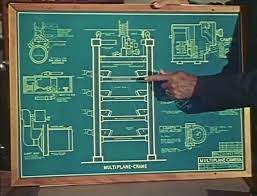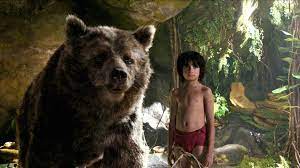By the 1960’s, the so called Big Five Hollywood Studios were struggling financially and, in some cases, creatively. The mass consumption of TV had resulted in families staying at home for their entertainment and, therefore, away from the cinema. This had a hugely detrimental impact on the studio’s profits.
Unlike other studios, Disney had diversified. In 1955 it opened its first Disneyland theme park and was maintaining revenue from both this and its live-action films and TV content. In this sense Walt Disney can be seen as a pioneer of the horizontally integrated business model.
Consequently, Disney was cash rich enough to continue innovating. In-house, it developed technology that arguably improved the quality of its animation and encouraged audiences back to the big screen to enjoy the improved cinematic spectacle. Xerography, developed for the production of 101 Dalmatians (1961), was a dry photocopying technique. It streamlined animation and ultimately saved money; keeping Disney alive in the film business.
By 1967 Disney had pioneered the multiplane camera. This enabled animators to create a greater sense of depth and more realistically recreate perspective. It also offset, what many believed to be, the less realistic look of xerography which necessitated black outlines around characters and other aspects ‘mise-en-scene’. Multiplane cameras were used to great effect to render the density of the vegetation, moving water and the motion of the animals on The Jungle Book (1967).

The parlous financial situation of the time also forced Disney’s hand with other technical innovation. Walt Disney – increasingly hands-on during this period – personally restructured the animation process to include far fewer animators on each picture. Alongside this he oversaw a significant change in the production process whereby animation was created to fit actor’s voice performances rather than vice-versa. This convention endures today.
The Jungle Book (1967); a seemingly benign family film, out-of-step with the 60’s zeitgeist, the New Hollywood era of change and revolution and competing with the increasing popularity of home viewing benefitted immensely from these advances, and was, in the end, a financial success. In fact, it could be argued that television – a technology that we now take for granted – had inadvertently saved Disney (and maybe cinema) by forcing it to be technologically innovative; reminding it of the need to be cinematic.

Despite the huge technological changes that have occurred in the film and media industry in the last 50 years a significant number of parallels exist between The Jungle Book 1967 and The Jungle Book 2016. Like the 1967 version, the recent live-action reboot was/is also competing with innovations in home-viewing technology and changes in media consumption habits. The proliferation of digital streaming platforms such as Netflix and Amazon Prime provide an abundance of quality home viewing and improved choice. This has emerged in-step with Smart TVs, 4K resolution and home sound systems that try to replicate cinema quality sound. Not only that, the cinema of now is also competing with the interactive tendencies of gamers and the modern prosumer or viewser; accustomed to creating content and interacting with other media users.
Jungle Book both embraced and took the fight to these changes. Like JB 67 it attempted to maximise its visual, cinematic appeal. The modern day equivalent of multiplane cameras and xerography are the sophisticated motion capture, green screen and CGI technologies that in turn create photorealistic animation and virtual landscapes. This technology results in more realistic looking animal characters and movement but also more convincing anthropomorphic performances.
Moreover, Disney made 3D and IMAX versions of the film available. This aims to provide a scale and depth to the way the film is exhibited that sets it apart from anything that could be experienced at home.
The Big Five studios of Old Hollywood have been replaced by the fully horizontally integrated Big Five conglomerates of the modern mainstream media industry. This means that the risk of a film’s financial failure is limited (Hesmondhalgh). Disney, for instance, now have their own subscription streaming channel, Disney+, where a film can be monetised away from the box office. Jungle Book 2016 is also available as a digital download on a number of other platforms. This breaks with the Disney tradition of vaulting content.
Jungle Book 2016 also appropriated social media and embraced the habits of a user-generated generation in the marketing and promotion of the film. Savings made with cheaper digital distribution can be invested in raising the pre-release profile of a movie. Not only did they spend big on above-the-line strategies such as a mega primetime Super Bowl TV ad but also worked below-the-line by creating interactive Tik-Tok and Instagram filters and behind-the-scenes content accessible on Facebook and Youtube.
In conclusion, it can be argued that technology has had a huge impact on changes in the film industry. The advent of TV in the 1960’s led to Disney innovating technology to improve the quality and cost-effectiveness of its animation. In 2016, Disney utilised digital marketing and production methods to distinguish its films from what’s available at home and to co-opt the social media prosumer habits of the modern audience. A diachronic comparison The Jungle Book (1967) and The Jungle Book (2016) reveals that technological innovation is often driven and characterised by the tension between TV and cinema.
